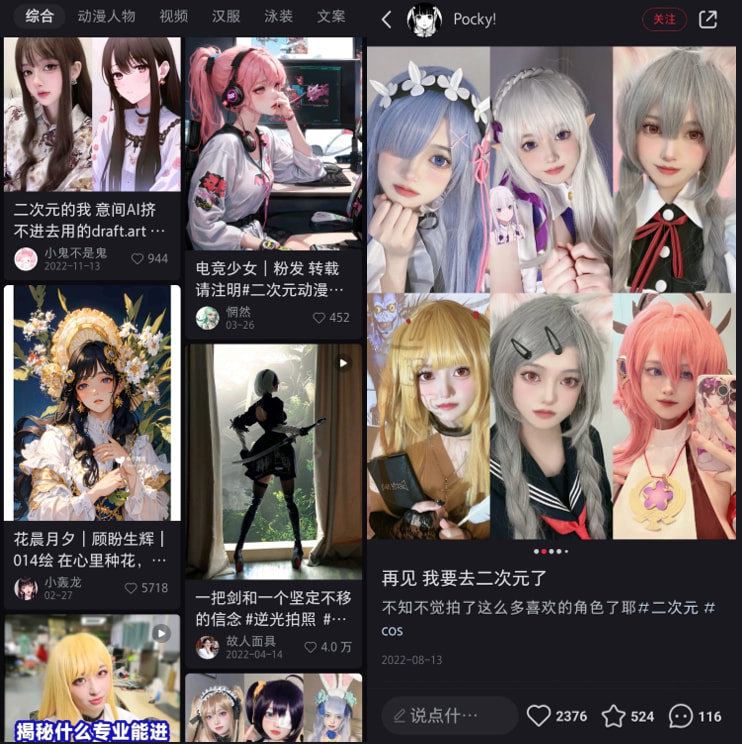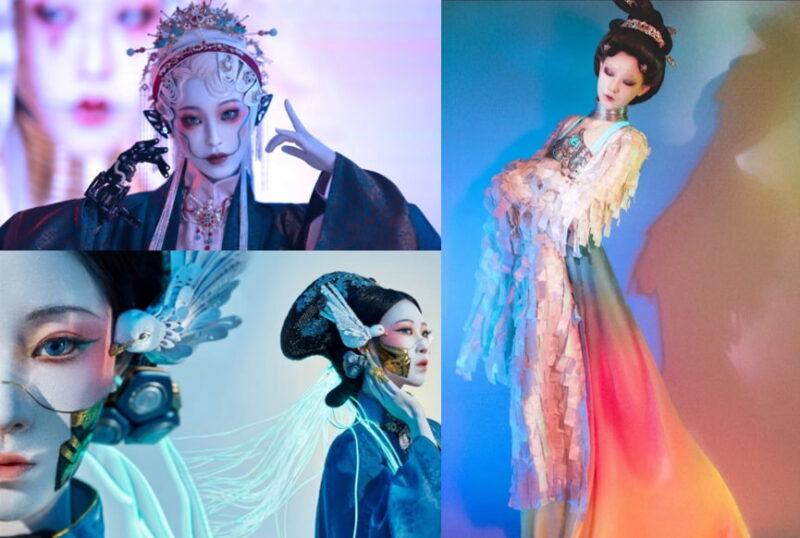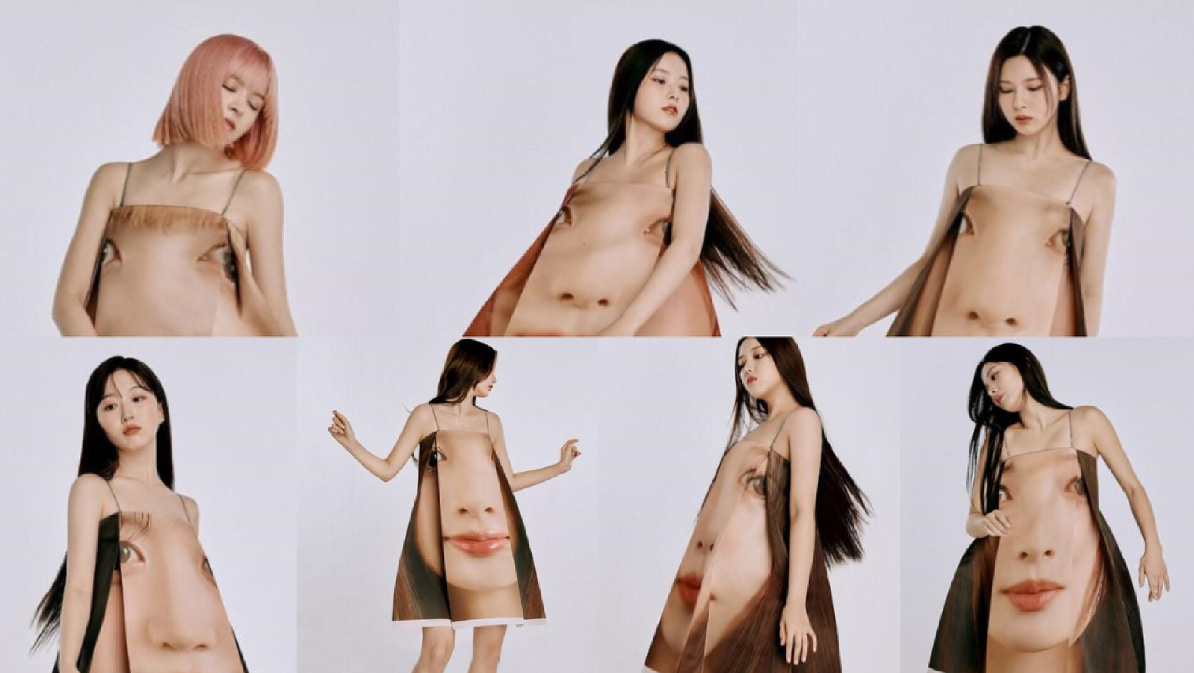Subcultures are social groups that share a common identity, lifestyle, and ideology that sets them apart from mainstream society. These groups not only provide a platform for people to express their individuality, but also challenge societal norms and encourage free-thinking. Typically associated with rebellious ideas, subcultures in China embody a dynamic, out-of-the-box attitude that symbolizes youth and creative energy.
5 subcultures in China that really matter today
As China’s society continues to evolve, so does its culture. New subcultures emerge, often drawing inspiration from the country’s social and technological advancements, while others look back to traditional customs of the past. In 2022-2023, five of the most important and influential Chinese subcultures are:
1. ACGN subculture (二次元文化)
The ACGN (Anime, Comics, Games, and Novels) subculture is known in China under the name erciyuan 二次元, which literally means two dimensions. The term directly refers to the 2D animation world, which is seen by fans as an ideal place where to escape. Today, this subculture encompasses a wide range of trends, from virtual idols to the Lolitas and the Yujie (御姐), which influence how people perceive beauty. Those who belong to this subculture refer to outsiders as three-dimensional people.
The Chinese video streaming platform Bilibili (哔哩哔哩), also known as B-site (B站), is considered to be the main online community for ACGN fans. There, young people have the opportunity to gather and enjoy the content they like together with other fans. One of the most beloved features of this platform is the ability to live-streams comments on the screen. This feature strengthens the sense of belonging to the ACGN community, as fans have the feeling to be watching the episode together with others.

2. Hanfu (汉服)
The Hanfu is a traditional dress used in imperial China by noble women. The dress has changed a lot over time and across different dynasties, but its influence still resonates in today’s society. The trend first reappeared in the early 2000s and it gradually spread out to become a national phenomenon, also thanks to the growing popularity of the Guochao (国潮). The Hanfu can nowadays be considered a Chinese subculture, characterized by a common sense of aesthetics among its fans. The revival of this style generated new business opportunities both online and offline. Hanfu can be easily bought in local shops and on e-commerce platforms, or can be rented. Fans of this current call each other tongpao (同袍) and enjoy taking strolls in parks wearing Chinese traditional dresses.
3. Cyberpunk subculture (赛博朋克文化)
The term cyberpunk was first used in science-fiction novels in the second half of the 20th century. It is composed of two words, cyber, relating to the world of technology, and punk, indicating a kind of people with rebellious and anti-conformist attitudes, sharing common ideologies, fashion style and forms of expression. The Cyberpunk world is a futuristic dystopia, where technology is extremely advanced and people’s quality of life has decreased drastically. The cyberpunk spirit rebels against the general trend of today’s society, which puts aside moral dignity in favor of technological development.
4. Buddhist subculture (佛系文化)
The mainstream mentality today requests people to be productive and work hard. But some Chinese people follow a different way of life, inspired by Buddhism. Followers of this subculture do not chase after desires and ambitions, but accept life as it is. The emergence of this trend is partly due to the increasing social pressure felt by Chinese youngsters, who are hence inclined to shut themselves off the world and live their lives confined in their own circle. This subculture has implications for both the society and the economy, as most of these people have a weaker desire to consume and live a minimalist lifestyle.
Directly linked to this vision of life is the term tang ping (躺平), literally meaning lying flat. Adopting a tang ping lifestyle involves detaching oneself from society and refusing to live a standard life, characterised by the obsession for money and stability. In 2021, tang ping was rated as one of the top 10 buzzwords on Internet.
5. Tuwei (or rural-style) culture (土味文化)
The term tuwei 土味 started circulating in China in 2016 and it gradually spread out becoming a major trend in China’s cultural landscape. This subculture has no clear definition, yet. There are currently two ways of defining the term tuwei 土味, the first one being the rediscovery of the lifestyle in the countryside, but the second one is more complex and more widely used on social networks. It refers to the telling of old tales, cheesy pick-up lines (土味情话), and old-fashioned jokes, as well as singing and dancing to happy melodies with over-the-top movements and expressions. It is basically about embracing what is cringe and expressing oneself. Today, this trend has spread throughout the Chinese internet and is also being used in in the business environment.
A combination of styles: the new wave of Hanfu and Cyberpunk
Cyberpunk Hanfu is a new trend in China. Combining traditional clothing with technology-inspired characteristics, the Cyberpunk Hanfu has started to gain more and more attention thanks to the beauty blogger Lao Baba (老八捌).
The unique combination led to new ways of making Hanfu, which adapted to the cyberpunk style in color and fabric. Unlike traditional dresses that express elegance and balance, the modified versions are bold and dark.

Why internet trends and subcultures matter
Understanding subcultures and the reason behind their popularity is essential for describing consumer behavior and forecasting new market trends. Internet and social media have made it easier for new generations – from Gen-Z onwards – to join and form communities based on shared interests.
In the digitalized world, internet trends and subcultures constantly evolve. In order to successfully ride the cultural waves, it is important to recognize the social phenomena driving them. What makes young people identify with certain subcultures and how do they consume? These are the key questions to ask when doing market research on a target social group.
Leveraging popular subcultures for business
Subcultures in China are relevant for brands because they represent the diverse and dynamic interests of Chinese consumers. They can offer brands an opportunity to connect with niche markets, create loyal fans, and differentiate themselves from competitors. However, brands need to understand the subcultures they target and respect their values and norms. Otherwise, they risk alienating or offending them. Therefore, brands should do thorough research and engage with subcultures authentically and creatively. Here are two examples of effective use of subcultural trends:
How Huawei made use of the ACGN subculture
As of the first quarter of 2023, Luo Tianyi (洛天依) is China’s most popular virtual idol. In the attempt of attracting young consumers, multiple brands chose her as their spokesperson, from KFC to Louis Vuitton to Nestlé. In 2020, she collaborated with Huawei to launch its new product Huawei nova7 Pro and held a special event dedicated to the new graduates. Due to the pandemic, new graduates were deprived of a proper graduation ceremony and did not have the chance to take group photos. To make up for the loss, Huawei launched an app only available for Huawei nova7 Pro which allowed students to record a vlog and to take exclusive photos featuring the virtual idol Luo Tianyi.
Leveraging the ACGN subculture’s popularity, Huawei’s move not only successfully advertised its new product, but also showed that the brand cares about young Chinese consumers and their life experiences.

The rural-style subculture enters the luxury fashion market
Adopting a tuwei approach in marketing means taking bold and creative decisions, which often happen to generate debate on social media. These are all part of what is called corny marketing, a trend that has enjoyed a fair share of popularity in recent years. The Spanish luxury brand LOEWE also tried to exploit the new interest towards the tu taste during its promotional shooting featuring their global ambassadors, the K-pop group NMIXX. The brand printed each girl’s face on a dress and let them wear it for the shooting. The photos sparked up discussions both in Korea and in China, as the styles were widely criticized.
As a luxury brand, LOEWE does not need to strictly follow people’s general tastes, but can be more provocative with its social marketing strategy. Adopting a tuwei approach generated a reverse marketing effect, thus building brand awareness.
However, Chinese consumers are particularly sensitive and have a long history in boycotting brands that cross the line. Therefore, it is best for companies to know the limits of their target audience and avoid trying their hand.

What are Chinese subcultures and how can enterprises leverage them?
- Subcultures are social groups that share a common identity and views about life. Among the reasons that bring people to join a subculture is the pressure they feel from economic and social issues. In the Chinese case, the large population enhances the need for young people to distinguish themselves from the masses and rediscover their own uniqueness.
- The most popular Chinese subcultures in 2022-2023 are: Hanfu, ACGN, Cyberpunk, Buddhist and tuwei subcultures.
- Subcultures in China tend to influence each other. An example of this is the new trend combining the Hanfu and the Cyberpunk styles.
- China’s digital world is subjected to constant changes and subcultures tend to come and go in a relatively short amount of time. Thus, it is important to understand the social phenomena causing their popularity, instead of blindly following trends.
- Examples of effective use of subcultural characteristic in business environments are Luo Tianyi’ and Huawei’s collaboration and LOEWE’s use of the tuwei in social marketing.
Author: Chiara M. Barbera
Download our China luxury industry white paper






